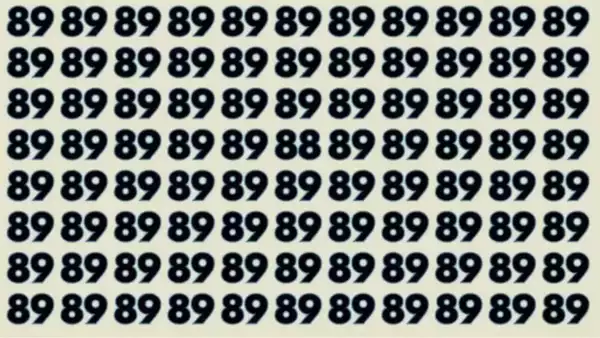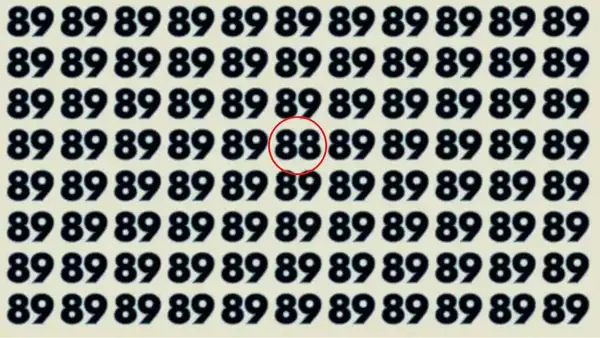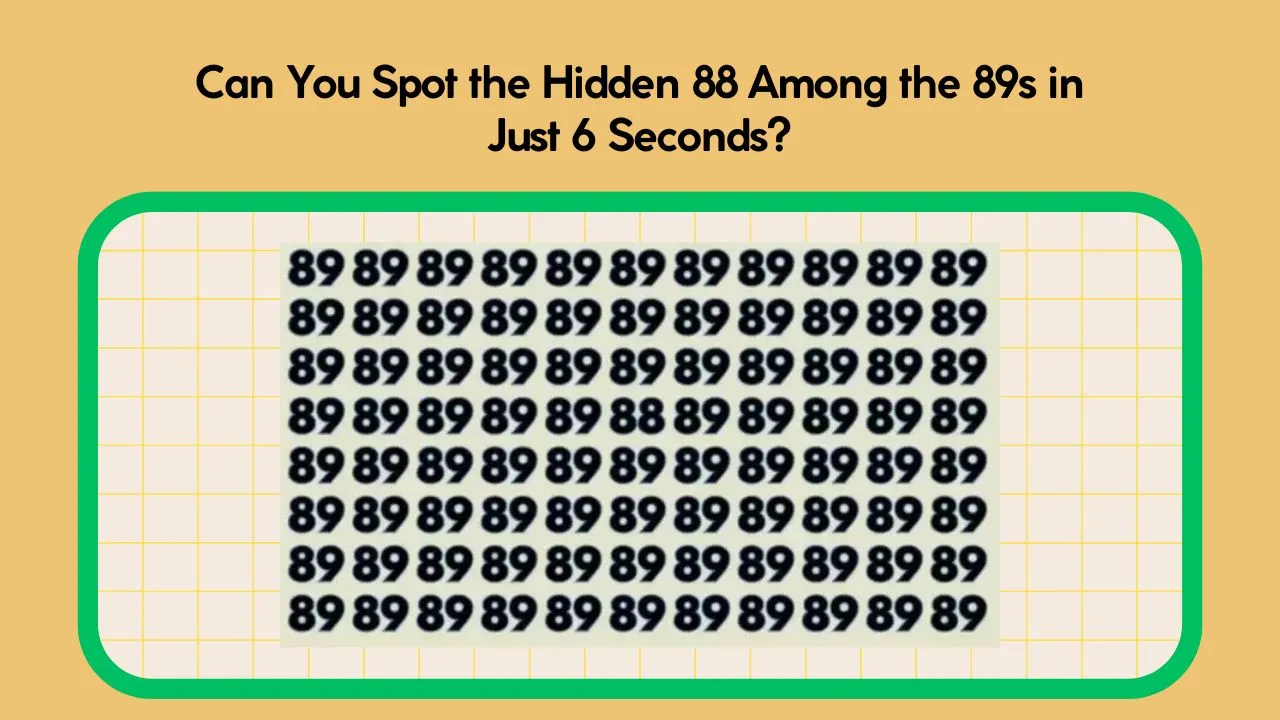Optical illusions are interesting windows into how our brains see the environment, and they are more than just visual trickery. A popular web illusion asks viewers to identify the number 88 buried in a grid of 89s. The trick is that you have just six seconds to complete it!
It appears to be a straightforward field of repeated integers at first glance. The image is filled with dozens of 89s arranged in tidy rows and columns, lulling your eyes into a familiar pattern. However, tucked away in that seemingly flawless design is a single 88, which tests your ability to observe, move quickly, and pay attention to details.
Why Is This So Difficult?
Pattern recognition fatigue is a cognitive condition that is exacerbated by this kind of visual stress. When an element, such as the number “89,” is seen frequently, the brain begins processing it automatically, ignoring little variations. This is comparable to when you read a document several times and no longer notice typos.
Your brain is prone to believe that all of the characters in the grid are the same since “88” and “89” have a similar appearance, particularly when they are closely spaced. Finding the one number that doesn’t belong and breaking the mental pattern become challenging.
The Six-Second Rule
The six-second time limit is what makes this puzzle much more entertaining—and challenging. Your eyes and brain have to work harder as a result of the increased pressure. Most people read from top to bottom or left to right, but because of the time constraint, you must think more like a puzzle solver and transcend your usual reading habits.

Before the clock runs out, can you locate it?
How the Brain Is Trained by Optical Illusions
Despite their apparent entertainment value, optical illusions have multiple cognitive advantages:
- Improved Focus: Being able to identify subtle variations helps you focus better on other tasks.
- Better Visual Processing: Your brain gets more adept at sifting through visual noise.
- Improved Memory and Problem-Solving: Research indicates that solving visual puzzles can foster both creative thinking and short-term memory.
- Stress Reduction: Finishing an enjoyable, quick puzzle can provide a little mental respite and a satisfying sense of accomplishment.
On social media sites like YouTube, Instagram, and TikTok, these challenges have become viral phenomena, which is understandable. They provide a quick mental workout, immediate feedback, and the opportunity to boast if you beat the time.
How to Identify the 88
If you’re still having trouble locating the illusive “88,” try these easy techniques:
- Instead of scanning horizontally, scan diagonally.
- In order to see the shape instead of the number, slightly blur your vision.
- To see things from a different angle, zoom out.
- Some illusions conceal the object in unexpected places, so start at the bottom.

This optical illusion is more than just a game; it’s a fun and useful brain exercise, regardless of how long you take to find the “88” or how quickly you do it. Don’t just scroll past a puzzle like this the next time you see one. Accept the challenge; you may be doing more mental training than you think.

